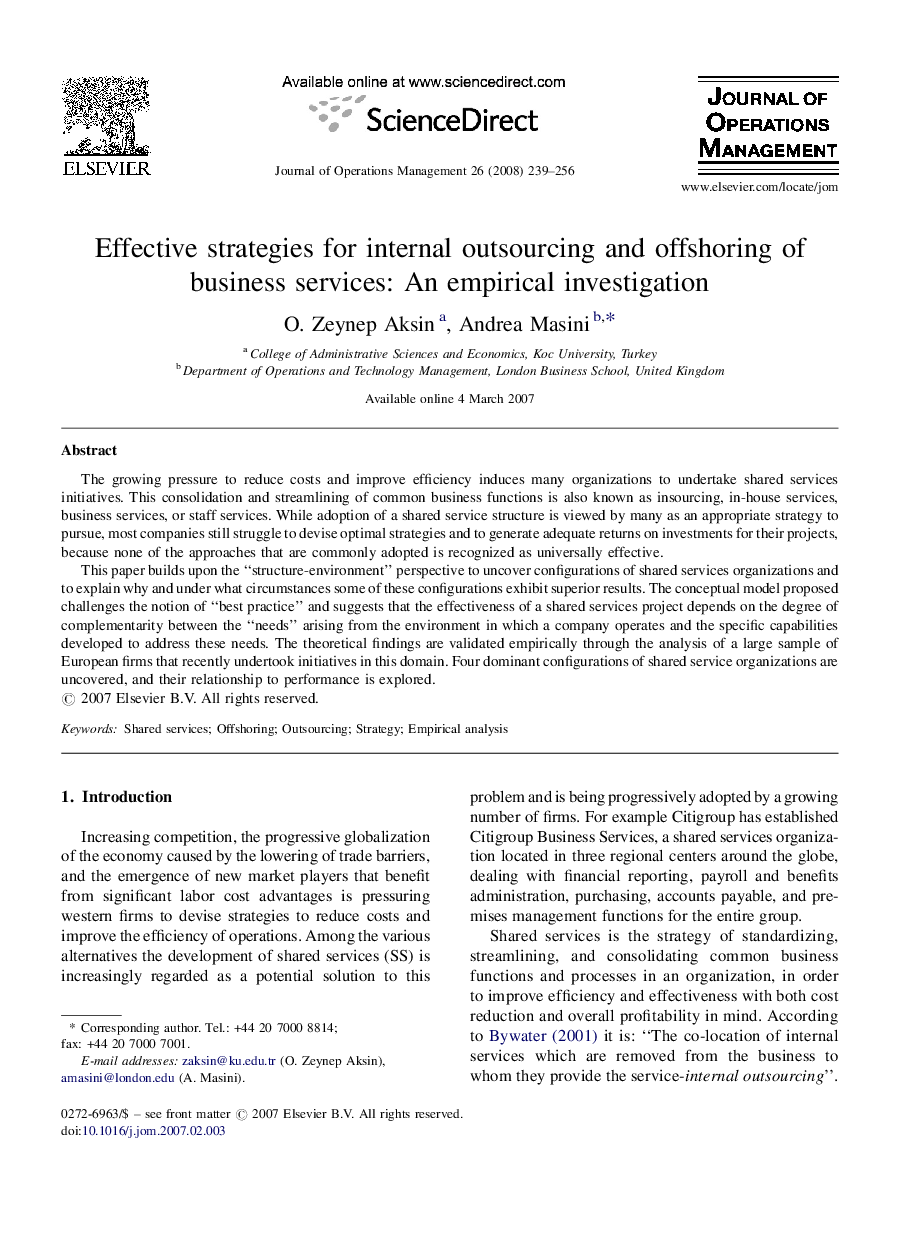| Article ID | Journal | Published Year | Pages | File Type |
|---|---|---|---|---|
| 1032239 | Journal of Operations Management | 2008 | 18 Pages |
The growing pressure to reduce costs and improve efficiency induces many organizations to undertake shared services initiatives. This consolidation and streamlining of common business functions is also known as insourcing, in-house services, business services, or staff services. While adoption of a shared service structure is viewed by many as an appropriate strategy to pursue, most companies still struggle to devise optimal strategies and to generate adequate returns on investments for their projects, because none of the approaches that are commonly adopted is recognized as universally effective.This paper builds upon the “structure-environment” perspective to uncover configurations of shared services organizations and to explain why and under what circumstances some of these configurations exhibit superior results. The conceptual model proposed challenges the notion of “best practice” and suggests that the effectiveness of a shared services project depends on the degree of complementarity between the “needs” arising from the environment in which a company operates and the specific capabilities developed to address these needs. The theoretical findings are validated empirically through the analysis of a large sample of European firms that recently undertook initiatives in this domain. Four dominant configurations of shared service organizations are uncovered, and their relationship to performance is explored.
